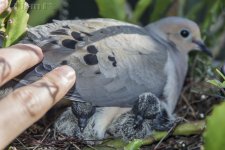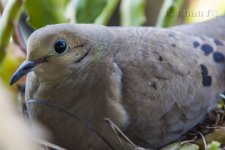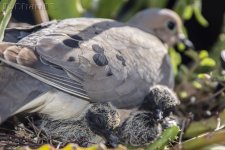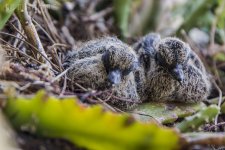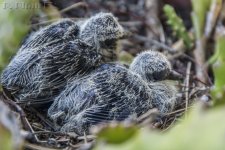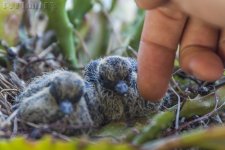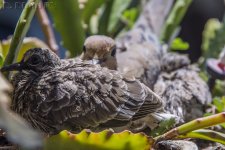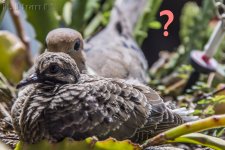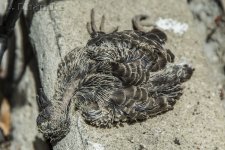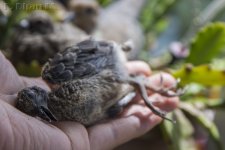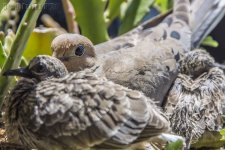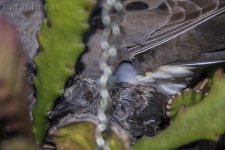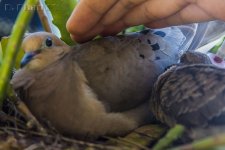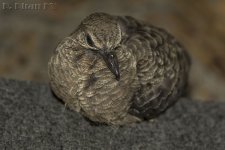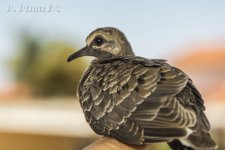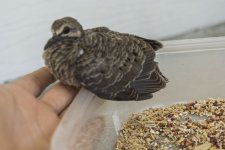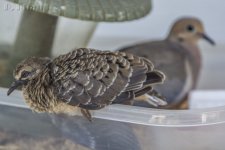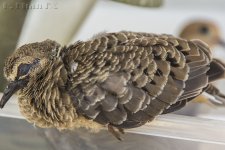Mourning dove mother in yard appears friendly
Hi folks,
I'm new and have been filming a dove family that started in a hanging flower pot in my yard when July started. I've seen the bird every day and yesterday I spotted newborns. The bird exhibits very high tolerance for my presence, leading me to believe it may have bred in that pot before.. or, is it perhaps conditioned tolerance? Early on it would just fly away, then as days went by it would ruffle feathers and coo at me if I walked too close before.. now it allows me to pet it without any real fuss. I've been filming the whole thing for upload to youtube and my friends on the national gardening boards have been following along. But no one there really understands its natural behavior. Why doesn't it fight back or at least fly away, for example. There is a male that I also filmed swapping with her during the last 2 weeks. Why doesn't he attack? Are zenaida naturally friendly and tolerant of humans? It doesn't make sense that a dove would just make home in a pot at eye-level without some fear or trepidation toward my presence...
Hi folks,
I'm new and have been filming a dove family that started in a hanging flower pot in my yard when July started. I've seen the bird every day and yesterday I spotted newborns. The bird exhibits very high tolerance for my presence, leading me to believe it may have bred in that pot before.. or, is it perhaps conditioned tolerance? Early on it would just fly away, then as days went by it would ruffle feathers and coo at me if I walked too close before.. now it allows me to pet it without any real fuss. I've been filming the whole thing for upload to youtube and my friends on the national gardening boards have been following along. But no one there really understands its natural behavior. Why doesn't it fight back or at least fly away, for example. There is a male that I also filmed swapping with her during the last 2 weeks. Why doesn't he attack? Are zenaida naturally friendly and tolerant of humans? It doesn't make sense that a dove would just make home in a pot at eye-level without some fear or trepidation toward my presence...
Attachments
Last edited:




